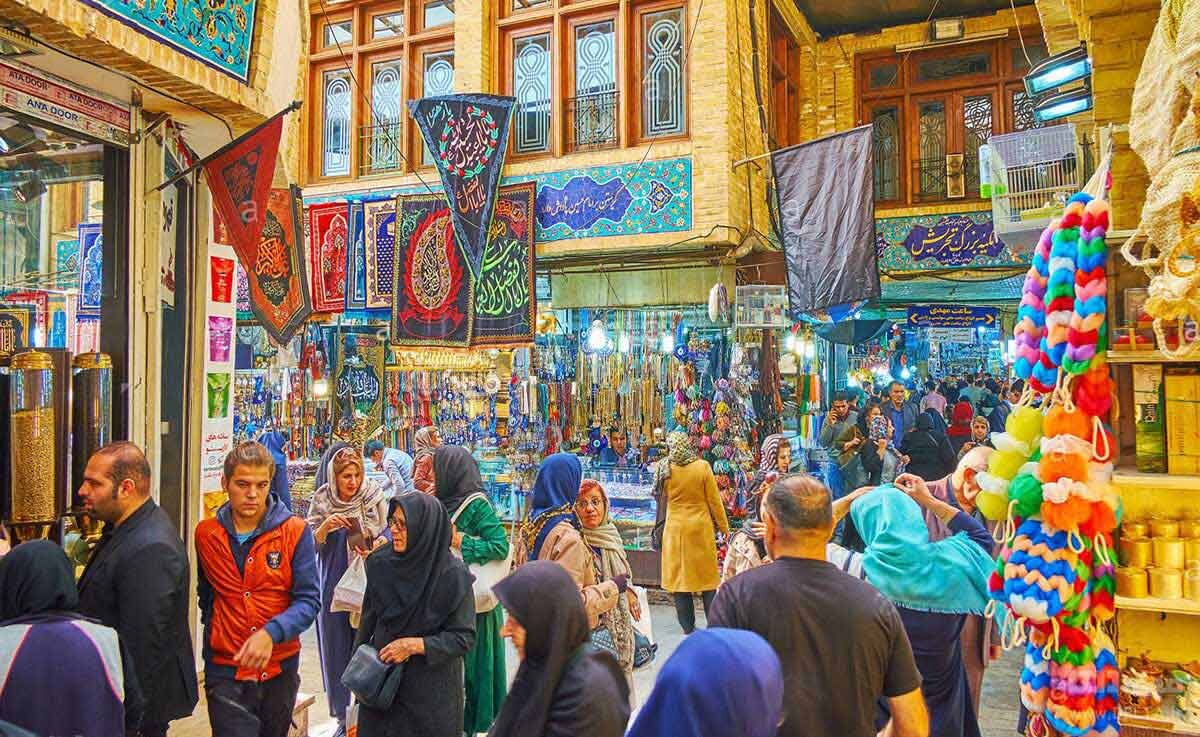Bazaar-e Tajrish: a shopper’s paradise with a historical twist

TEHRAN – Bazaar-e Tajrish, which is situated in the northern part of Tehran, is vibrant traditional marketplace deeply rooted in Persian history and culture.
With its captivating atmosphere, maze-like alleys, and diverse collection of shops, it is a must-visit destination for tourists seeking an authentic Iranian experience.
Situated in the Tajrish neighborhood, in the foothills of the Alborz Mountains, the bazaar enjoys a strategic location that attracts locals and visitors alike. It holds a prominent place in Tehran’s history, dating back to the Qajar era (1785-1925) when the city flourished as the capital of Iran.
Its western entrance is next to Imamzadeh Saleh, where most of the fruit and vegetables of the season are sold. When you enter the market, a large and exciting exhibition of taste, color, and smell opens in front of you like a beautiful and vivid painting.
Th bazaar’s labyrinthine layout adds to its charm, with narrow alleys, arches, brick roofs, and beautifully arched entrance gates. The architectural style predominantly reflects Persian influences and showcases intricately designed interiors as well. This historical site has stood the test of time, surviving through various stages of urban development in the city.
Beyond its commercial aspects, the Tajrish Bazaar provides visitors with immersive cultural experiences. Local musicians playing traditional instruments often serenade shoppers, adding an enchanting soundtrack to the atmosphere. Visitors can also witness the traditional practice of carpet weaving and interact with skilled artisans.
The Imamzadeh Saleh Shrine is a revered pilgrimage site for Shia Muslims, which further enhances the spiritual ambiance of the area. This beautiful shrine attracts hundreds of devotees each day while offering a unique glimpse into Iran’s religious heritage.
Moreover, the bazaar offers an extensive variety of goods and products, making it an ideal place to indulge in traditional Iranian shopping. Here, visitors can find an enchanting array of handicrafts, carpets, spices, jewelry, traditional clothing, and antiques. The shops are run by local artisans and merchants, offering a unique opportunity to witness the artistry and craftsmanship that has been passed down through generations.
Almost everything is sold beautifully and colorfully in the old shops in this market. A variety of pickled cucumbers, high quality and fragrant spices, premium saffron, cleaned and juiced vegetables, summer vegetables, colorful peppers, and everything found in this market seems to be not only for sale but also to beautify this charming market.
The marketplace, however, is not only limited to fruits, vegetables, and groceries, but you can also find a variety of dishes, utensils, handicrafts, cosmetics, clothes, and thousands of other items there. It’s a bazaar that’s sure to be fun to stroll through, even if you’re not a shopper.
In addition, the old bazaar is also renowned for its culinary treats. Traditional Iranian sweets, such as baklava and Persian dates, are readily available, highlighting the region’s rich gastronomic culture. Additionally, numerous restaurants and food stalls serve authentic Persian cuisine, allowing visitors to savor local delicacies such as kebabs, Ash-e Reshteh (a thick noodle and vegetable soup), and Abgoosht (a hearty meat and chickpea stew).
Vendors also sell religious items such as rosaries, seals, rugs, prayer tents, wheat for pigeons, candles, and salt for vows in this bazaar, like most of the bazaars next to religious places.
Tajrish is one of the oldest districts of Tehran; created one of the most evocative and unique places in Tehran, where you can still see narrow alleys and historic houses full of trees.
AFM
Leave a Comment